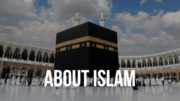 By Dan Wolf
By Dan Wolf
In a previous article, I discussed some of the events occurring at the end of the Abbasid dynasty that included: a Mongol invasion, the rise of the Mamluks, and the development of the Seljuk Turk kingdom that would eventually give birth to the Ottoman Empire. This article will look at the development of each of these events after the Abbasid’s fall, and then look briefly at the issues of governance and dhimmitude as Ottoman rule is largely referred to as a more tolerant period within Islam. This article will then close with some words from our fifth president – John Quincy Adams – on the differences, as he saw them, between Christianity and Islam and some implications arising from those differences.
But first a timeline is presented below to help understand the timing of some significant events occurring during the period of Ottoman expansion. It should be noted that the Ottoman Empire continued to exist until the early 20th century, about 300 years beyond the period presented below.
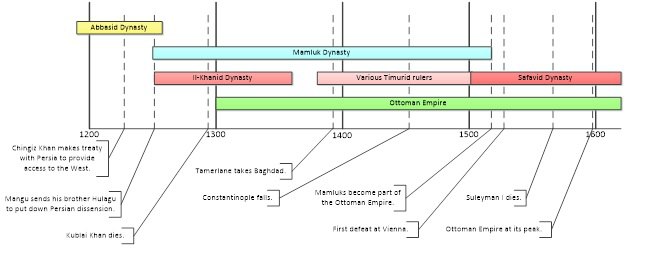
Figure 1: Events Related to the Ottoman Empire
History
The Abbasid decline did not result in the direct rise of the Ottoman Empire. Instead a vacuum was created by its defeat in which several powers rose. There were many smaller areas that exercised significant degrees of autonomy, and to some degree this occurred throughout the Ottoman Empire’s existence. We will look at the three largest domains to arise within the territory that had been a part of the Abbasid Dynasty: (1) the Mamluks (Egypt and Syria), (2) the Il-Khanid (Persia), and (3) the Ottoman Empire (Anatolia). A part of that discussion will also outline some events that set in place the division between East and West within Islam.
The Il-Khanid
Early in the thirteenth century Chingiz Khan (Genghis Khan) created an empire that stretched from a significant part of China toward the Dnieper River in the west. In 1222 he made a treaty with the Shah of Persia to allow his people access to the west. A short time later a party of Mongol merchants were murdered by one of the Shah’s governors, their goods were confiscated, and Chingiz Khan’s envoy sent to obtain reparations was tortured and killed. Chingiz Khan and his four sons led a Mongol army west in retaliation. The Mongols were met by an Islamic army in modern Kazakhstan, where the Mongols are reported to have slain 160,000 of the 400,000 man army sent east to meet them. They invaded Georgia in 1222 and also defeated the Russian army. Chingiz Khan died in 1227.[1]
He was succeeded by Ogdai who pushed further into China in the east and by 1241 in the west had destroyed Moscow and Kiev in Russia and marched as far as Poland and Hungary. In addition to the Mongols traveling west, Nestorian monks travelled to the east where they began evangelizing. By the time Ogdai’s successor, Kuyuk, became Emperor in about 1243 Christianity had made significant inroads into the Mongol nation. It is said that Kuyuk’s physicians and chief officials were Christians, and that he had a church-tent close to the royal pavilion.[2] A byproduct of these, and earlier, Mongol expansions was to force large numbers of Seljuk Turks into Anatolia and Syria, where they settled after decisively defeating the Byzantines at Manzikert in 1071. (For more information on the Seljuk Dynasty, see The Abbasid Dynasty – Part I.)
Kuyuk was succeeded by Mangu, a nephew of Ogdai in 1251. He had two brothers, Hulagu and Kublai. While Mangu and Kublai focused their conquest efforts in the east, Mangu sent Hulagu west. Mangu made no distinction between Christians, Jews, Muslims, Buddhists, or believers in Lamaism. However, Hulagu was a Christian and a fanatical adversary of Islam. In 1256 he invaded the Kohistan district within Pakistan where 800,000 subjects were massacred and their king killed. He took control of Persia and reached Baghdad in 1258. He besieged the city and when it fell he spared the Christians, but massacred thousands of others.
Hulagu’s goal was to ‘gain possession of Jerusalem because they [the Mongols] wanted to destroy the Arabs who were in Syria and in Palestine, and to massacre their Saljuk supporters.’[3] He sacked Aleppo and Damascus surrendered to him in 1260. But while preparing to take Jerusalem, he learned of Mangu’s death and returned to Mongolia. He was empowered to take control over all the lands he had conquered, but instead he declared himself to be an independent king, an Il-Khan.[4] He was defeated by a Mamluk army in 1260, and continued to reign until 1265.
Initially the Mongols tried to form treaties and alliances with the Christian kings of Europe and the Pope in Rome. However, these rulers did not understand that Hulagu’s goal was simply the destruction of Islam’s followers, and no agreements were ever reached. When the Mongols saw ’that there was no military assistance to be gained from Europe, their Christian zeal began to abate, and Western Mongols began to fraternize with Syrian and Egyptian Muslims, and Islam began to make progress among them.’[5]
A larger degree of tolerance towards Christians within Islamic lands was exhibited at this time. Not only did Hulagu support Christianity, but his brother Kublai did as well – despite the latter’s personal belief in Lamaism. Kublai did much to support the development of Christianity within his kingdom, which by this time stretched from the Yellow Sea in the east to the Black Sea in the west, and from Mongolia in the north to Tonquin in the south. Muslims did not make any overt effort against other religions so long as Kublai Khan lived. He died in 1294.
With Kublai Khan’s death, the Muslims began to rebel against the Mongols and rose against the Christians. ‘The Arabs hated the Mongols both as men and as Christians, and their memories of the atrocities committed at Baghdad by Hulagu, nerved them to fight to the death, sparing no one.’[6] Hulagu’s son Abga, who reigned from 1265 – 1281, continued to correspond with the Pope and kings of Europe. It was during his reign that Marco Polo travelled to the east.
After Abga’s reign, his successors initially vacillated between Christianity and Islam and became too weak to prevent attacks by local Islamic forces. By the fourteenth century, ‘the Nestorians were cruelly persecuted; the goods of their merchants were confiscated, their churches were destroyed, and those who refused to accept Islam and could not escape were slain. It is probable that large numbers became Muslims and excused themselves for so doing by saying that it was better to accept a religion which proclaimed God and His Unity, than to revert to paganism and idolatry.’[7]
By the end of the fourteenth century, Nestorianism practically ceased to exist in Persia, Central Asia, or China. The last of the Il-Khans continued to rule until 1335. The Monks of Kublai Khan Emperor of China chronicles the persecution and massacres of Christians in the villages of Maraghah near Azerbaijan and Arbil northwest of Baghdad in Kurdish Iraq late in the thirteenth century. Other works chronicle similar events around Mosul,[8] Baghdad,[9] the Mardin region in Turkey, and a Nestorian village along the Tigris during this same period.[10]
The Mamluks
As noted above, the Mamluks defeated the Mongols in 1260. This is the first documented defeat of the Mongol army in open combat. Mamluk literally means slave, and the Mamluks were a slave army of Seljuk Turks and Circassians, created and employed by the Islamic rulers during the Abbasid dynasty. The Mamluks frequently used their military power to overthrow the local political authority. These usurpations of power often did not last long, but in Egypt they were able to become the power behind a caliph – who was maintained as a symbol to legitimize their authority. Any caliph who did not acquiesce soon found themselves dispatched by the Mamluk generals. By the middle of the thirteenth century, they were strong enough to establish dynasties in both Egypt and India.
‘Historians have traditionally broken the era of Mamluk rule into two periods—one covering 1250-1382, the other, 1382-1517. Western historians call the former the “Bahr’I” period and the latter the “Burji,” because of the political dominance of the regiments known by these names during the respective times. The contemporary Muslim historians referred to the same divisions as the “Turkish” and “Circassian” periods, in order to call attention to the change in ethnic origin of the majority of Mamluks, which occurred and persisted after the accession of Barquq in 1382.’[11]
The following is a map of the Mamluk Dynasty at its peak.
Figure 2: Mamluk Dynasty at its peak – 1317[12]
There is general agreement that the Mamluks declined during their Circassian period. They drove the last of the Crusaders out of the Holy Lands and turned back the Mongols – both of which occurred during the Turkish period. During the Turkish period, advancement was based upon ability. Under the Circassians, advancement became based upon race (i.e., Circassian). Other factors led to the weakening of the Mamluks, including an inability to unite to defeat Bedouin raiding parties that resulted in economic disorder arising from trade disruptions and agricultural losses. These were further compounded by several plagues that occurred within Egypt and the East. This left the Mamluks unable to prevent Tamerlane from taking Baghdad temporarily in 1395. The final economic blow came with the Portuguese discovery of a sea route to the East at the beginning of the sixteenth century.
The declining economy weakened the army as the taxes needed to maintain it could not easily be raised. The Mamluks were defeated by the Ottomans in both Syria and Egypt. One reason for the defeat was the adoption of field artillery by the Ottomans, while the Mamluks used artillery only when conducting sieges. The Mamluk territory became a part of the Ottoman Empire in 1517, with much of the general population rising up against the Mamluks and the corruption they represented.
The Mamluks continued to be a presence within the Ottoman Empire. They became a part of the Ottoman army, and over time again achieved positions of significant power and influence over the Empire. The Ottomans removed the Mamluk requirement of excluding their sons from serving only in non-slave regiments. This resulted in changing the dynamics of loyalty from one based upon their regiment to one based upon family ties, and created additional factions that made it difficult to hold the Empire together. As we will see shortly, by the end of the seventeenth century the Mamluks once again controlled the armies, tax revenue and government. Napoleon faced a Mamluk army when he entered Egypt in 1798, but Mamluk power ended when they were massacred by Muhammad Ali Pasha in 1811.[13]
The Ottomans
As noted above, the Turks had been driven into Anatolia and Syria by the advance of the Mongols. During Hulagu’s reign, the Mongols took portions of eastern Anatolia from the Turks, but their primary objectives were Syria and the city of Jerusalem. It was from northwestern Anatolia that the Ottoman Empire rose. Osman was from the Kayi tribe, and the prince of a territory on the border frontier with the Byzantines. After the last defeat of the Seljuk Turks by the Mongols in 1293, Osman was able to take additional territory from the Byzantines who were in a state of decline. He ruled until 1324 and it is during his reign that the Ottoman Empire began.
Osman was succeeded by Orhan and his son Murad I. They continued taking territory from the Byzantines, eventually moving into southeastern Europe, but bypassing the major cities like Constantinople and Belgrade as they did not then have the means to conquer these more heavily fortified cities. They continued the Abbasid tactic of destroying the sources of food and tax revenue in order to weaken their adversaries.
The wealth generated by the taking of Byzantine territory attracted many nomads to fight for the Ottomans, but Orhan began a tradition of employing Christian mercenaries to lessen the Empire’s reliance on the nomads. Orhan’s annexation of Karasi (in southern Anatolia) also made the Ottoman Empire the primary ally of the Byzantines. This alliance provided the Ottomans with the opportunity to gain direct knowledge of the Byzantine territory and its weaknesses. The early Ottoman rulers also strengthened their alliances by marriage, to both Christian courts and Islamic principalities. Orhan ruled until 1360. A map of the Ottoman and Byzantine Empires around 1350 is shown below.
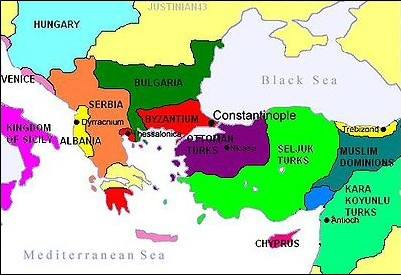
Figure 3: Byzantine and Ottoman Empires about 1350[14]
Murad I was succeeded by his son Bayezid I, after the formers death in one of the Battles of Kosovo. He turned his attention to Anatolia to eliminate a threat from one of the remaining Turkish territories (Karaman) to the east. Bayezid’s accomplishments were so significant that ‘he was given the title of sultan by the shadow Abbasid caliph of Cairo, despite the opposition of the caliph’s Mamluk masters.’[15] The Seljuk Turks were attacked by Tamerlane in 1397 in order to protect the latter’s flank as he drove into India and Persia. Bayezid’s followers deserted him – all except his Christian mercenaries – and he was captured at the battle of Ankara, and died a short time later. Tamerlane broke up the Ottoman territory in order to remove the threat they posed to his ambitions.
Murad II was made ruler by Turkish notables in 1421 and ruled until 1451. Murad began to resent the power that had been gained by the notables, and created the devsirme system as a counter-balance. This system formalized the practice begun by Orhan of levying, as tribute, one fifth of the Christian children from the Balkan region.[16] The children of non-Muslims were viewed as fay, property belonging to the state, and under Murad the levies began to be collected annually. The youngsters were generally 14-20 years of age when drafted, were taken in contingents of a thousand at a time, and taken from the families of the aristocracy and priests. They were converted to Islam and served the sultan for life in his janissary corps, an infantry used against Christian kingdoms in the Ottoman’s wars. A parallel system of ichoghlani was also created that took children six to ten years of age into the service of the sultan as Ottoman administrators, after a training period of fourteen years.[17]
To increase the sultan’s power further, the concept of using a military slave force for the benefit of the Empire (kapikulu) was enlarged to include the Turkish nobility as well. With this change only persons accepting the status of slave, whether Muslim or non-Muslim, could hold positions in the Ottoman army or government.[18] Anyone could achieve this status as long as they accepted ‘absolute obedience to their master [the sultan] and the devotion of their lives, properties, and families to his service.’[19]
Later sultans continued to play the notables against the janissaries in order to retain power and control the Empire. With the fall of Constantinople in 1453, the Turkish notable’s power significantly decreased, and many were executed or exiled to Anatolia. However, the power of the janissaries and notables continued to fluctuate within the Empire. The Ottoman’s continued to fight against the kingdoms of Europe, the Mamluks in Syria and Egypt, and the Safavids in Persia.
The Safavids were Turkish tribes who emigrated from eastern Anatolia into Persia in reaction to the Ottoman return to a strictly orthodox form of Sunni Islam. The Safavid embraced Shia and Sufi doctrines, and spread dissension leading to several revolts within Ottoman provinces. The Ottomans were unable to conquer the Safavids, as the latter generally chose not to engage in direct conflict. Their dynasty lasted from about 1501 through the early part of the 18th century. This rift left the Islamic world divided as we see it today. As was mentioned earlier, the Mamluk Dynasty was defeated and became part of the Ottoman Empire in 1517. Finally, the Empire advanced as far as Vienna, where it was defeated a second time in 1683.
The map below shows the Ottoman Empire’s expansion from its inception to its peak in about 1599.
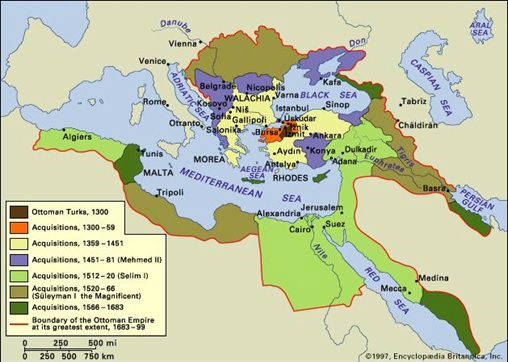
Figure 4: Rise of the Ottoman Empire 1300 – 1599[20]
Governance
As mentioned in an earlier article, the military was added as a third functional institution of the ruling class during the Abbasid Dynasty, in addition to the state and religious functions. The Ottomans added a fourth functional institution of administration. This new function was responsible for the collecting of all the Empire’s revenue and its expenditures. During Ottoman rule all members of the army and government were required to submit in complete obedience to the sultan. Increasingly this required administrators to be followers of Islam, and the employment of the janissaries and ichoghlani over time ensured that shift occurred.
The attributes needed to enter the Ottoman ruling class included:
- Professing complete loyalty to the state.
- Acceptance of orthodox (Sunni) Islam.
- Knowing and practicing the Ottoman Way, a complicated system of customs, behaviors, and language.[21]
The function of this ruling class was to preserve the Islamic state. Its main duty was to enlarge, protect, and exploit the Empire’s wealth for the state’s benefit.
The Empire increased its territory through war. The janissaries and mercenaries used by the Empire were paid with salaries instead of booty. While this provided more control over the wealth obtained by the Empire, it also resulted in incurring a much higher degree of fixed expenses that had to be met. The size of the army that needed to be maintained proved to be a great weight on the Empire’s economy. Large debts were accumulated to finance its continuing wars. This led several sultans to take some of the following actions in order to try and maintain economic order:
- Devaluation of coins by reducing the amount of precious metal they contained. This led to inflation and individuals hiding the more valuable coins from the Empire’s tax collectors, which then led to policies of forced remittance of older coins or their confiscation by the Empire.
- Creation of monopolies sanctioned by the government. The sale of monopolies provided a temporary increase in the government’s revenues, but this was offset by weak economic conditions created by inferior goods being produced and sold for much higher prices than were available outside the Empire.
- All revenue producing property was determined to belong to the state and therefore confiscated, reducing the incentive to effectively manage the land’s production.
- As the army grew, land was given as timars and tax farms in lieu of wages, a structure that still allowed revenue to be produced for the Empire but set up conflict between local ruler’s and the sultans interests.
The weakened economic conditions led to shortages and increased social unrest. The rise of nationalism in the eighteenth and nineteenth centuries led to many rebellions, particularly in the Balkan region. While the government was able to play the rebel factions against each other, the result was often that the food supply was disrupted – leading to widespread famines, and a further increase in social unrest.
Society’s fabric was exemplified by Shari’a. Shari’a became the core of political, social, and moral regulations and principles. It was intended to cover all aspects of Muslim life. Sultans were left to create civil law where it did not conflict with Shari’a. While civil law could be invalidated where it conflicted with Shari’a, as we saw earlier, such conflicting rules were often co-opted and over time incorporated into Islamic law. (Also see the next section on Dhimmitude.)
The sultans were able to exercise great authority as they had the army to back them up. But in reality they were more like tribal chiefs. They received the extra fifth of booty advocated by Islamic law, but retaining the notables’ loyalty depended on conquering new territory and providing booty to those who followed them. With the decline of the Turkish notable’s power, the sultans no longer had a counter-weight to balance against the power of the janissaries. Instead the army (including the Mamluks) later exercised control over the sultans and increasingly began to use the government for its own benefit.
The changes in the military led to the creation of innumerable factions within the ruling class, and they worked to reduce the sultan’s power by keeping them uneducated and out of any situation where they could learn how to exercise their power. Several attempts at reform were undertaken by some of the later sultans, but these were hampered by: (1) the factions themselves, (2) a decrease in centralized authority as power had devolved to the various factions, and (3) a sense of Ottoman superiority leading it to reject many of the changes that had occurred in the rest of the world. From the Ottoman’s view their failure was not that the changes occurring elsewhere were superior, but rather that they were somehow failing to apply the techniques that had worked so well for them in the past.
As Islam is orthopraxic (concerned primarily with correct practice) it tends to look backward, whereas Christianity relies on orthodoxy (concern with correct belief) and tends to be forward looking.
The final blow came with the Empire’s alliance with Central Powers in World War I. The surrender of Bulgaria in 1918 severed the direct links between the Ottoman Empire and Germany, and the Ottoman Empire signed an armistice later that year. The map below shows the disintegration of the Ottoman Empire.
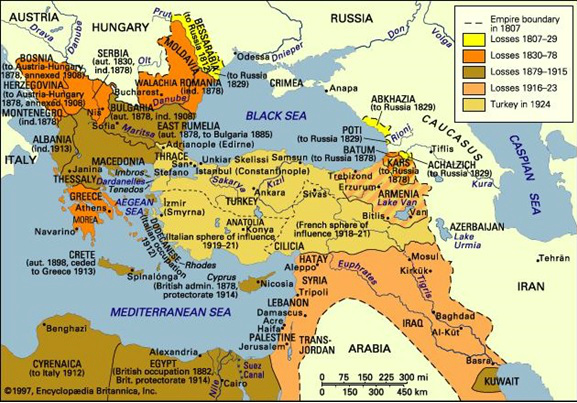
Figure 5: Ottoman Empire, 1800 – 1924[22]
Dhimmitude
As noted in the last article, the Abbasid dhimma’s policies continued under the Ottomans, and the harsh treatment of conquered peoples under jihad continued until the seventeenth century. This corresponds with the period leading to the Ottomans peak territorial expansion. In addition, large forced relocations of both Muslim and non-Muslim populations occurred as they did during the Abbasid period. In regards to jihad and its aftermath:
‘The holy war being the cornerstone of the Ottomans state and the source of its expansion, strength, and wealth, the government and administration of the empire was entirely dominated by militaristic imperatives. When resistance from the Habsburgs in central Europe and from Persia in the East halted Ottoman expansion in the sixteenth and seventeenth centuries, the war machine lost its external combat zones and imploded, devastating the territory of the empire itself. As in the Arab period when an anarchical phase followed a period of conquests, so the immigration of semi-nomadic tribes engendered uncontrollable disorders in Anatolia, Armenia, and the Balkans. Turkish immigrants, adventurers, fleeing slaves, and peasants, driven from their lands or deported, formed a floating, rootless population living from banditry, rebel chiefs recruited their troops and their liege men from such groups.’[23]
The Ottoman sultans at times did try to help the conquered peoples, but the actions of local chiefs often undermined the sultan’s policies. There are several actions during the Ottoman period that are pointed to as indications of more humane treatment of non-Islamic populations. One is the conquest of Constantinople. The city was spared devastation during the siege. It had to be repopulated after its fall, as ‘fifty to sixty thousand people were enslaved and deported.’[24] Mehmed II had a goal of restoring the city’s industry and trade. To do this he brought in people from all ethnicities and religions from the Empire to the renamed Istanbul. An invitation was extended to Jews living outside the Empire to come to Istanbul in particular and the Empire in general, and later under Suleyman I France was given special dispensations in trade and commerce in return for coordinating its efforts against their mutual enemy, the Hapsburgs. The French privileges later grew to allowing the Catholic Church to create schools and missions within the Empire to convert non-Muslims to Catholicism.
We also noted in the previous article that the Islamic Empire was sometimes welcomed as a religious liberator. With the Christianization of the Roman Empire the mixing of state and religion had institutionalized persecution within Byzantine’s government and administration. These policies and laws ‘based on religious dogma, were henceforth integrated into Islamic legislation, [and] now justified by other theological principles. In an ironic twist of history, Islam found—in the countries which had come under its domination—an outstanding instrument of oppression for the destruction of Christians, already formulated and perfected by the Church itself.’[25]
‘Similarity exists in the two sets of legislation [Byzantine and Islamic] concerning the possession of slaves, proselytism, blasphemy, apostasy, religious buildings, conversions, exclusion from public office, prohibition of mixed marriage, social segregation, and the refusal to accept testimony in court.’[26] Although there was great similarity between both sets of laws, it must be remembered that Islamic law developed within an entirely different ideological structure. Within Islam, these laws were placed within the concept of religious war where the rights of non-Muslims depended on a relationship of protection borrowed from Arabic culture.
To this set of regulations the Muslims added the jizya: ‘the blood ransom in exchange for the right to life. Later, additional degrading legislation brought persecution to a level of refinement rarely attained. It decreed the form and color of the dhimmi’s clothing and shoes, their haircut and headgear. It specified the type of mounts and saddles permitted and the way in which they could be ridden, as well as greetings and behavior in the street.’[27]
Monophysites, Copts, Jacobites, Armenians, and Nestorians had all been persecuted and tortured at various times under the Byzantines. And all these different groups at times persecuted the Jews. The Persians had welcomed many of these groups, and the Nestorians were the largest non-Zoroastrian group within Persia before its fall to the early caliphs. This religious persecution was a primary cause for many groups deserting the Byzantines and welcoming Islam during the early jihad.
Third, under the Ottomans many non-Muslims were allowed to live in self-governing communities called millets under their own religious laws, traditions, and language. A millet’s leader was both a religious and government leader – again a mixing of state and religion into a single function. With the institutionalized persecution noted above, religious intolerance was exacerbated within the millet system – and the Ottomans at times exploited these religious hostilities to maintain order. These schisms reignited again during the rebellions related to the nationalism movements of the nineteenth and twentieth centuries at the end of the Ottoman Empire.
The dhimmis rebelled in order to restore their basic freedoms and recognize their nationality, culture, and languages. These actions brought reprisals from the umma. A few significant persecutions include:
- The 1822 taking of the Greek island of Chios where all but 1,800 of the 113,000 inhabitants were either massacred or sold into slavery.[28]
- The execution of 100,000 – 200,000 Armenians in eastern Anatolia during 1894 – 1896, that encouraged many Armenians to become Orthodox in order to seek the protection of Russia.[29]
- The execution of as many as 600,000 Armenians in eastern Anatolia during World War I, with others being deported.[30]
Observations of John Quincy Adams
In closing this series, John Quincy Adams wrote some observations about the Ottoman Empire and Islam over one hundred and eighty five years ago. In addition to being the fifth President of the United States, he had a long experienced career serving on diplomatic missions that started with accompanying his father, John Adams, to France and the Netherlands when he was only twelve years old. Beginning at the age of fourteen he spent time in Russia, Finland, Sweden, and Denmark. He was appointed minister to the Netherlands in 1793 at the age of 26, and the first minister to Russia in 1809 where he served until 1814 when he was recalled to help negotiate the treaty ending the War of 1812 between the US and Great Britain. He served as Secretary of State from 1817 – 1825, and was selected by the House of Representatives to be President in 1825 when the candidates running all failed to receive the necessary number of electoral votes to win the election.
He was one of the chief architects of the Monroe Doctrine as Secretary of State, and a witness to the wars against the Barbary Pirates and the Greek War for Independence from the Ottomans. While he opposed intervening in European affairs, he was very well acquainted with both the Ottoman Empire and Islam, and was a long-time opponent of slavery. The following is an extract from the 1830 The American Annual Register comparing Christianity with Islam.
‘The Christian was taught, that the end of his being on earth, was the salvation of his soul hereafter. … THE ESSENCE OF THIS DOCTRINE IS, TO READY THE SPIRITUAL PART OF HIS NATURE. …
‘In the seventh century of the Christian era, a wandering Arab of the lineage of Hagar, the Egyptian, combining the powers of transcendent genius, with the preternatural energy of a fanatic, and the fraudulent spirit of an imposter, proclaimed himself as a messenger from Heaven, and spread desolation and delusion over an extensive portion of the earth.
‘Adopting from the sublime conception of the Mosaic law, the doctrine of one omnipotent God; he connected indissolubly with it, the audacious falsehood that he was himself his prophet and apostle. Adopting from the new Revelation of Jesus, the faith and hope of immortal life, and of future retribution, he humbled it to the dust, by adapting all the rewards and sanctions of his religion to the gratification of the sexual passion.
‘He poisoned the sources of human felicity at the fountain, by degrading the condition of the female sex, and the allowance of polygamy; and he declared undistinguishing and exterminating war, as a part of his religion, against all the rest of mankind. THE ESSENCE OF HIS DOCTRINE WAS VIOLENCE AND LUST: TO EXALT THE BRUTAL OVER THE SPIRITUAL PART OF HUMAN NATURE.
‘Between these two religions, thus contrasted in their characters, a war of twelve hundred years has already raged. That war is yet flagrant; nor can it cease but by the extinction of that imposture, which has been permitted by Providence to prolong the degeneracy of man. While the merciless and dissolute dogmas of the false prophet shall furnish motives to human action, there can never be peace upon earth, and good will towards men. The hand of Ishmael will be against every man, and every man’s hand against him. …
‘It [Islam] is the dominion of matter over mind; of darkness over light; of brutal force over righteousness and truth. But divine justice finds not its consummation upon earth. Individual virtue or vice, receives much of its retribution after its mortal career has closed; and the rewards and punishments of nations are adapted to measures of time, extending over numerous successive generations, and many centuries of years.’[31] (Emphasis in the original)
Adams contrasts the engine of commerce to that of war, and uses the examples of the American War for Independence with the role of the East India Company in India.
‘In the half century that has elapsed since the publication of that work [Gibbon’s Decline and Fall of the Roman Empire], this truth, which a philosophical historian ought then to have discerned and traced to its causes, has been manifested in broader light from year to year. While the whole power of the British empire has been signally baffled by inglorious defeat in the attempt to retain in subjugation three millions of their own countrymen and fellow Christians in North America; a company of London merchants, under the patronage, though with little aid, of their government, have subdued in the far more distant regions of Hindustan, ten times as many millions of the disciples of Mahomet, or their subjects, and, as if Providence had specially intended to mark the contrast of glory and shame between the crescent and the cross, the same Christian chieftain who surrendered his sword to Washington at Yorktown, afterwards received as captive hostages the sons of Tippoo Saib, seven years before the extinction of his life and empire at the storm of Seringapatam.’[32]
Adams also cites Christianity’s obligations and contrasts those with Islam.
‘The infidel denies it in vain – This system of ethics, and of religion, promulgated by “the Galilean,” has raised the standard of human power, as well as of human virtue, higher than that of any other portion of the inhabitants of the globe.’ …
‘The first of his [Christian] obligations is to himself: to persevere in the program of self-improvement. … His next duties are to his fellow men: to those whom he only, of all the tribes and nations of the earth, is bound by the law of his God to consider as his brethren; as children of the same parent, doomed like him to a pilgrimage of probation here, but entitled, like himself, to look forward to a more joyful and glorious hereafter.
‘His superior acquirements have vested him with the privilege, and imposed upon him the obligation of becoming the teacher of his less enlightened fellow creatures; to make them acquainted with the blessings within their reach; and to lead them in the path of their own felicity. …
‘The precept of the koran is, perpetual war against all who deny, that Mahomet is the prophet of God. The vanquished may purchase their lives, by the payment of tribute; the victorious may be appeased by a false and delusive promise of peace; and the faithful follower of the prophet, may submit to the imperious necessities of defeat: but the command to propagate the Moslem creed by the sword is always obligatory, when it can be made effective. The commands of the prophet may be performed alike, by fraud, or by force.’[33]
He goes on to describe an incident after the Barbary pirates were defeated by Decatur. Treaties were drawn up in both English and Arabic where the Dey renounced all claims of tribute from the United States. Both treaties were signed, but unbeknownst to Decatur, an additional clause was inserted into the Arabic copy of the treaty that had not been a part of the negotiations. ‘Within a year the Dey demands, under penalty of the renewal of the war, an indemnity in money for the frigate taken by Decatur … The arrival of Chauncey, with a squadron before Algiers, silenced the fraudulent claim of the Dey, and he signed a new treaty in which it was abandoned; but he disdained to conceal his intentions; my power, said he, has been wrested from my hands; draw ye the treaty at your pleasure, and I will sign it; but beware of the moment, when I shall recover my power, for with that moment, your treaty shall be waste paper. He avowed what they always practiced, and would without scruple have practiced himself.’[34]
One trend that has been seen repeatedly throughout these articles is that the mixing of religion and government into a single function leads to the corruption of both, and the detriment of society – regardless of the religion. This is one of the reasons that our Constitution’s fulfillment of the promises made within the Declaration includes the protection of religion from government. But while religion is to be protected from government, religion is to have an indirect influence on government through the virtue and morality it instills in a people. In order for that virtue and morality to exist, there must be an ethical moral basis in a religion’s underlying beliefs and philosophy that teaches and promotes these values, and they must always be taught to the next generation. As this knowledge is not being taught in our public schools today, it is the topic of my work Do You Want To Be Free?,[35] and a forthcoming work (tentatively titled Charity and Society).
In writing these articles, the objective was simply to provide you with information about some of Islam’s basic tenets, their development, and some implications arising from its doctrines. To state the facts using original source material wherever possible. While this series on Islam’s history ends here, I hope that your journey to learn more will continue. Truth can only be found in our Creator, and it is in the search for truth alone that we find our freedom as we come to know Him. May we all find and live in the truth.
[1] Budge, Sir E. A. Wallace, The Monks of Kublai Khan Emperor of China, 1928, Assyrian International News Agency, http://www.aina.org/books/mokk/mokk.pdf. This is a translation of the original Syriac text. This quote comes from the Introduction to this work.
[2] Ibid.
[3] Ibid.
[4] Ibid.
[5] Ibid.
[6] Ibid.
[7] Ibid.
[8] Ye’or, Bat, The Decline of Eastern Christianity under Islam, From Jihad to Dhimmitude, pp. 346-7, Fairleigh Dickinson University Press, 2002. An extract from the chronicle of Bar Hebraeus is reproduced.
[9] Ibid, pp. 356-9. An extract from the chronicle of Bar Hebraeus is reproduced
[10] Ibid, pp. 350-6. An extract from the chronicle of Bar Hebraeus is reproduced.
[11] Britannica Online Encyclopedia, http://www.britannica.com/topic/Mamluk.
[12] By Ro4444 – Own work, CC BY-SA 4.0, https://commons.wikimedia.org/w/index.php?curid=46642565.
[13] Britannica Online Encyclopedia, http://www.britannica.com/topic/Mamluk, accessed January, 2016.
[14] Wikipedia, The rise and fall of Kantakouzenos, https://en.wikipedia.org/wiki/Byzantine_Empire_under_the_Palaiologos_dynasty#The_rise_and_fall_of_Kantakouzenos.2C_1341.E2.80.931357, accessed February, 2016.
[15] Britannica Online Encyclopedia, http://www.britannica.com/place/Ottoman-Empire, accessed January, 2016.
[16] Ye’or, Bat, The Decline of Eastern Christianity under Islam, From Jihad to Dhimmitude, pp. 113, Fairleigh Dickinson University Press, 2002.
[17] Ibid, p. 115.
[18] Britannica Online Encyclopedia, http://www.britannica.com/place/Ottoman-Empire, accessed January, 2016.
[19] Ibid.
[20] Britannica Online Encyclopedia, http://www.britannica.com/place/Ottoman-Empire, accessed January, 2016.
[21] Ibid.
[22] Ibid.
[23] Ye’or, Bat, The Decline of Eastern Christianity under Islam, From Jihad to Dhimmitude, p. 120, Fairleigh Dickinson University Press, 2002
[24] Ibid, p. 132.
[25] Ibid, p. 147.
[26] Ibid.
[27] Ibid.
[28] Ibid, p. 187.
[29] Ibid, p. 195.
[30] Britannica Online Encyclopedia, http://www.britannica.com/place/Ottoman-Empire, accessed January, 2016.
[31] Blunt, Joseph (1830), The American Annual Register for the Years 1827-8-9, Vol. 29, pp. 268-270, New York: E. & G.W. Blunt. [On-line], URL: http://www.archive.org/stream/p1americanannual29blunuoft
[32] Ibid, pp. 270-1.
[33] Ibid, pp. 273-4.
[34] Ibid, p. 274.
[35] Wolf, Dan, Do You Want To Be Free?, Telemachus Press, 2013. http://www.livingrightly.net.




